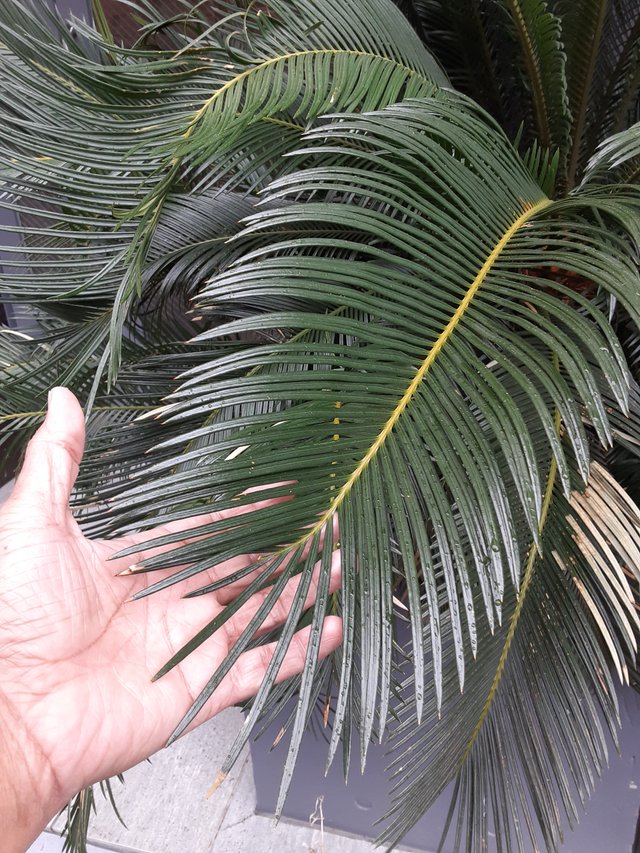
Cycas revoluta, commonly known as the sago palm or king sago palm, is a fascinating plant with distinctive leaves. Here's what I know about them:
Appearance:
- The leaves of Cycas revoluta are truly eye-catching. They grow in a feather-like rosette, forming a crown at the top of the trunk.
- Each leaf is composed of numerous narrow leaflets, ranging from 8 to 18 cm long. These leaflets have a glossy, deep green color and a distinctive downward curl along their edges, which is where the plant gets its scientific name "revoluta".
- The leaves can reach impressive lengths, with mature plants boasting leaves up to 1.5 meters long!
Growth and lifespan:
- Unlike true palms, Cycas revoluta is not actually a palm tree but a cycad. These plants are ancient relatives of conifers and have been around for millions of years.
- Despite its impressive appearance, Cycas revoluta is a slow-growing plant. It can take decades for these plants to reach full maturity. However, this also means they can live for a very long time, with some specimens known to be centuries old!
Interesting facts:
- While the leaves of Cycas revoluta may resemble those of true palms, it's important to remember that they are toxic to both humans and animals. All parts of the plant contain cycasin, a toxin that can cause severe illness if ingested.
- Despite their toxicity, Cycas revoluta leaves are sometimes used in traditional medicine. However, it's crucial to note that this should only be done under the supervision of a qualified healthcare professional.
Ref.:
 |  |
Upvoted! Thank you for supporting witness @jswit.
Downvoting a post can decrease pending rewards and make it less visible. Common reasons:
Submit